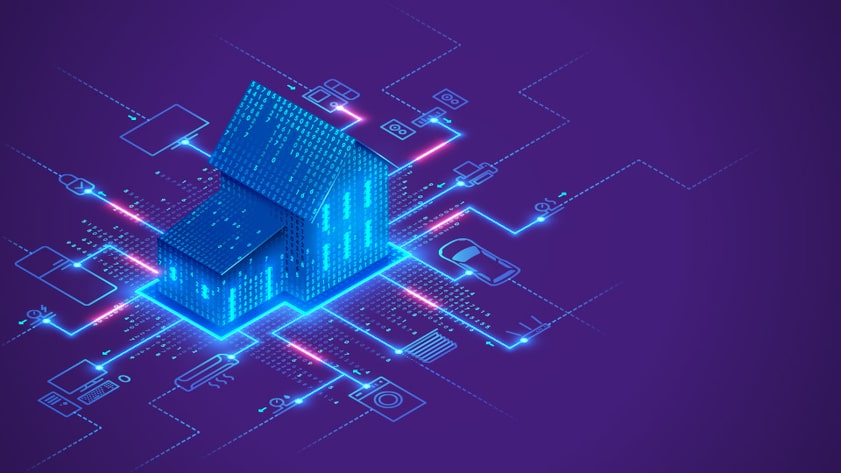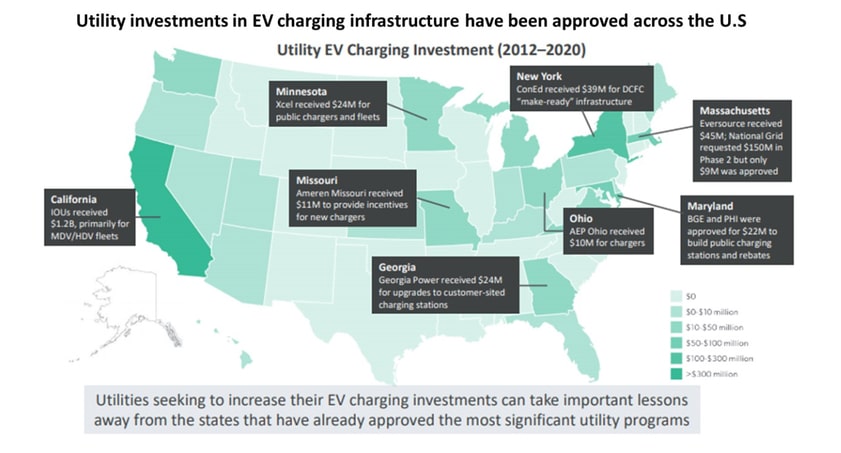Why Utilities Should Be Investing in EV Charging Programs

Electric Vehicles are the Future.
Electric stoves. Electric heat pumps. Electric bicycles. Electric scooters. A new renewable energy trend is lighting up the country, and it’s lit with LEDs: Electrification. All across the country, there is new regulation mandating electrification of buildings, power systems, and more to help improve overall air quality. This is an indication that more and more institutions would be investing in EV infrastructure. Meanwhile, electric vehicles are becoming more and more popular, from electric Postal Service vehicles to luxury pickup trucks.
Electricity Is the Future of Clean Energy. Can Our Grid Handle It?
The answer is yes, as long as the people in charge prepare for it accordingly. Utilities, grid operators, system operators, and regional transmission operators – they all have a role in preparing the grid for an electric future. Electric vehicle chargers are an important piece of the puzzle. With the right plan, utilities can invest in EV commercial charging stations to help keep the lights on and keep their customers happy. With billions of dollars of federal funding waiting for these investments, now is the time.
Investing in Smart EV Chargers Can Help Prevent Blackouts
Gas prices continue to hit record highs, causing demand for electric vehicles to skyrocket. EVs are expected to comprise half of all light-duty vehicles sold by 2025. Meanwhile, states and localities are electrifying more of their grid, and bringing on intermittent sources like renewables. This combination of increased demand and variable supply could be the recipe for blackout disaster – if utilities don’t respond.
We’re already seeing this play out in real time. The Energy Information Administration found that 2020 was the worst year on record for power outages in the United States, with the average electricity customer experiencing 20 more minutes of power interruptions than in 2017, the year with the second-worst blackouts. Data for 2021 hasn’t been published yet, but between Hurricane Ida and the deadly Texas winter storm, it may be on track to be another record-breaking year. As temperatures rise due to climate change, drying up hydropower sources and bringing more threatening wildfires, the North American Electricity Reliability Corp. warns that the country will face ever more rolling blackouts.
The good news is that having a robust network of smart EV chargers within a utility service territory can help mitigate blackouts. This is because they can be easily paired with “demand response” events.
Demand Response with EV Charging
Demand response (DR) is a valuable tool for utilities to keep the lights on during extreme weather, peak loads, patchy supply, or other potential threats to the grid. Essentially, it’s a way for utilities to work with their customer base to reduce the energy load of the grid during key moments. This happens through financial incentives like time-based variable rates, rebates, rewards, and more.
But it’s essential for these response events to be based on good data, and smart charging stations like the Juicebox and Juicebox Pro are key for this.
In California, smart chargers have been essential to automate charging during low-demand hours. They also can provide valuable information about when and where EV drivers are charging. Smart chargers allow the utilities to communicate with local charging equipment to offer a real-time response to the grid’s needs. We’ve worked with partners through our JuiceNet Utility Edition platform to accomplish this.
DR events have increased in recent years, a trend expected to continue. It’s clear that energy storage and smart EV charging are important for the future of electricity. With a network of smart EV charging stations, public utilities have more information and control, especially when paired with software like the JuiceNet Utility Edition. With more JuiceBox and JuiceBox Pro smart EV charging stations, utility managers can monitor and manage charging behavior across their service territory. JuiceNet, for example, provides critical features to manage residential and commercial EV demand, including the following:
• Create and manage utility smart charging programs
• Schedule and execute automated demand response events
• Monitor EV driver charging behavior, real-time charging station status and demand response event participation statistics
Public utilities can manage demand with data-based time-variable rates. These rates incentivize customers to charge their EVs when demand is low and discourage workplace charging during hours of peak electricity usage. Utilities can reward customers who charge when energy is clean and cheap. Regardless of the software, installing more EV chargers is a great first step to grid health and sustainability.
EV Chargers Can Maximize Wind and Solar Power On The Grid
With the right management, EV charging stations can help maximize renewable energy sources to their fullest potential. They can store electricity during peak winds and taper off charging when the renewable mix is low. Enel X Way offers a cloud-based software feature called JuiceNet Green, which monitors and reacts to the instantaneous energy market.
By shifting when and how much electricity connected EV charging stations draw from the grid, utilities and grid operators increase customer satisfaction, reduce electricity costs, ease grid congestion, and maximize the use of solar and wind power.
More Smart EV Chargers = Happier Utility Customers
EV sales continue to grow, quarter after quarter, year after year. In 2021, EV sales more than doubled, with 6.6 million new vehicles sold. This will only continue to increase, and the more EV demand increases, the more people will search for chargers on the road. If you build it, they will come — and we’re not just talking about a baseball field for ghosts. For some, an EV charger would even affect their search for a multi-unit dwelling. If EV chargers expand around local neighborhoods, more people will likely go electric for the first time.
Data shows that businesses that invest in EV charging equipment attract more customers and talented employees. The story is simple: people like having accessible EV chargers.
Why Utilities Should Invest in EV Charging Stations Now
The demand is here, the policies are ripe, and investment incentives abound. With the Bipartisan Infrastructure Law of 2021, nearly $5 billion is available to build out a national electric vehicle charging network. The goal is to create a network of EV charging stations along the interstate and other major thoroughfares, with even more funding to come for EV chargers in rural and underserved communities later this year. The Biden Administration’s goal is to reach 500,000 chargers across the country!
But that’s not all. All across the country, states have already been working with utilities to invest in EV charging infrastructure, from Massachusetts to California. This trend is sure to continue.

Source: Brattle Group
What’s next?
There are many roads a utility can take on the path to sustainability, but some are better than others. It makes sense to invest in EV charging stations now, while there are plenty of incentives and increasing demand. The U.S. is expected to have 20 million EVs on the road by 2030, which means the country will need to deploy 1.25 million public chargers to meet the new demand. Utilities should get ahead of the curve and invest in EV charging stations quickly.
Enel X Way can help. We offer all utilities a complete line of interoperable, hardware agnostic, OCPP compliant, smart grid electrical vehicle charging solutions. Enel X Way also provides collaborative designs on end-to-end smart charging programs that can help utilities meet their goals while staying within budget, whether it’s a passive or active residential smart charging program, or a commercial behavioral study to benchmark future programs.
